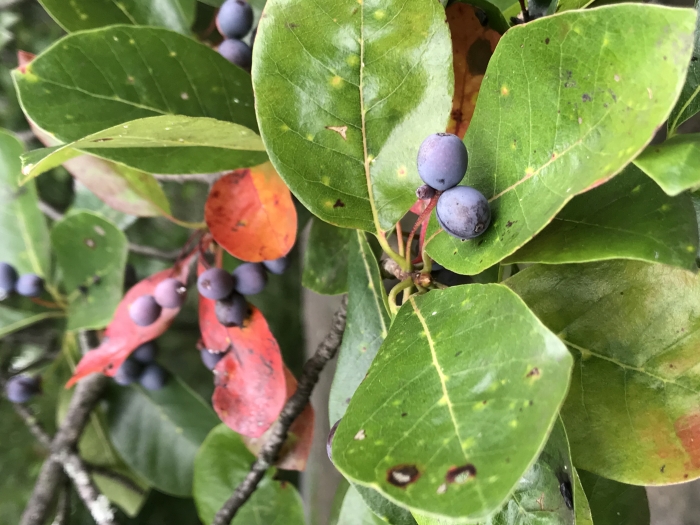Black Tupelo
(Nyssa sylvatica)
Black Tupelo (Nyssa sylvatica)
/
/

KATHERINE WAGNER-REISS
CC BY-SA 4.0
















































































Estimated Native Range
Summary
Black Tupelo is commonly used as an ornamental tree in parks and large gardens, serving as a specimen or shade tree. It is also appreciated for its wildlife value, as its fruits are consumed by many bird species. The tree prefers full sun to part shade, medium water, and well-drained soils. It is tolerant of wet conditions, making it suitable for planting in riparian zones. However, its deep taproot can make transplanting a challenge. Gardeners should be aware that deer may browse the leaves of young trees, potentially hindering establishment.CC BY-SA 4.0
Plant Description
- Plant Type: Tree
- Height: 30-50 feet
- Width: 20-30 feet
- Growth Rate: Moderate
- Flower Color: N/A
- Flowering Season: Spring
- Leaf Retention: Deciduous
Growth Requirements
- Sun: Full Sun, Part Shade
- Water: Medium
- Drainage: Fast, Medium
Common Uses
Bee Garden, Bird Garden, Butterfly Garden, Deer Resistant, Drought Tolerant, Edible*Disclaimer: Easyscape's listed plant edibility is for informational use. Always verify the safety and proper identification of any plant before consumption., Fire Resistant, Low Maintenance, Salt Tolerant, Street Planting
Natural Habitat
Moist woodland areas, swamps, and along pond margins in the Eastern United States
Other Names
Common Names: Black Gum, Blackgum, Black Tupelo, Pepperidge, Sour Gum, Black-Gum, Sour-Gum, Gommier Jaune, Gommier Noir
Scientific Names: , Nyssa sylvatica, Nyssa sylvatica var. typica, Nyssa integrifolia var. glauca, Nyssa multiflora var. sylvatica,
GBIF Accepted Name: Nyssa sylvatica Marshall